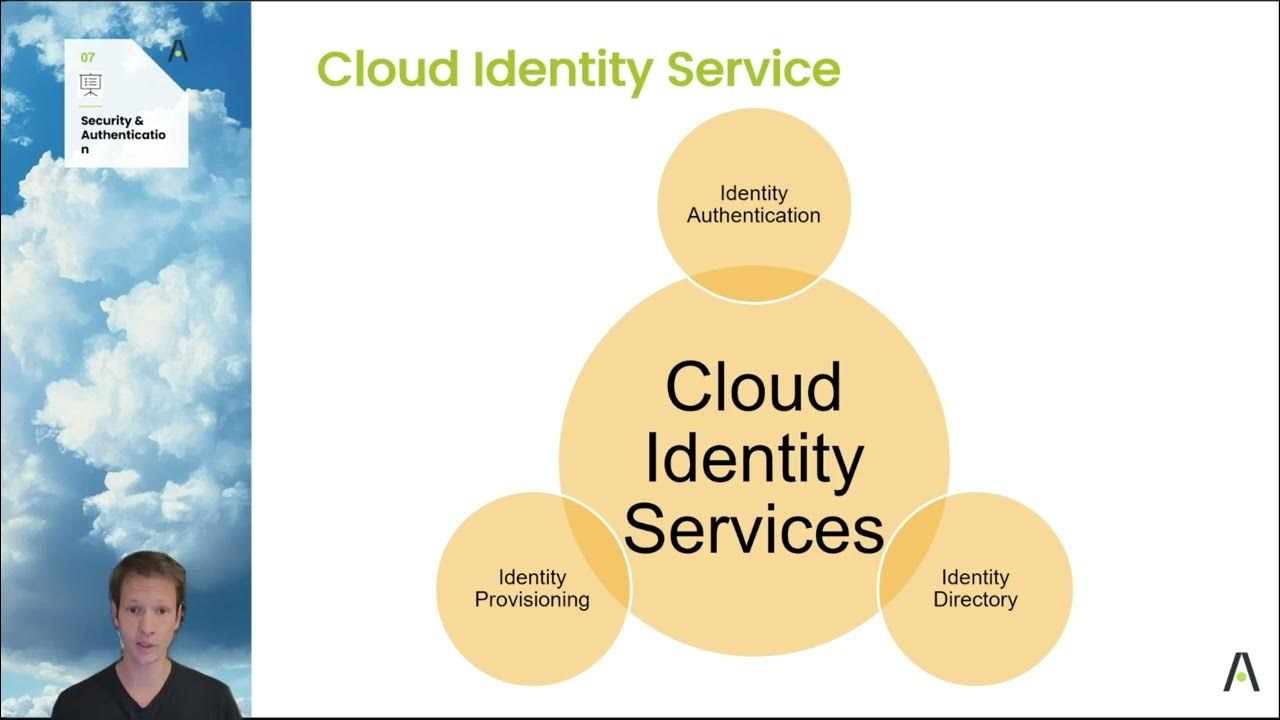CertMike Explains Kerberos
Summary
TLDRIn this video, Mike Chapel explains the Kerberos authentication system, which helps secure user authentication across various operating systems and enterprise environments. The process involves multiple servers, including the Authentication Server and Ticket Granting Server, and uses encrypted tickets to securely authenticate users. Mike breaks down each step, from initial identity verification to accessing network-based services like databases, offering an easy-to-understand overview of this complex but essential security service. Whether you're preparing for a certification exam or just curious, this video provides clear insights into how Kerberos works.
Takeaways
- 😀 Kerberos is an authentication system that uses tickets to securely verify users across different network services.
- 😀 The name 'Kerberos' comes from a three-headed dog in Greek mythology that guards the gates of Hell, adding a metaphorical layer to the security it provides.
- 😀 Kerberos is designed to work securely even over insecure networks, making it ideal for enterprise environments.
- 😀 For a service to support Kerberos authentication, it must be 'kerberized,' meaning it is configured to accept and process Kerberos tickets.
- 😀 Both Microsoft Windows and many versions of Linux support Kerberos authentication out of the box.
- 😀 The authentication process starts when a user contacts the Authentication Server (AS) to verify their identity using a password or other multi-factor authentication methods.
- 😀 The Authentication Server (AS) generates a session key, encrypts it with the user's password, and sends it back, along with a Ticket Granting Ticket (TGT).
- 😀 The Ticket Granting Ticket (TGT) allows the user to request access to other services without needing to authenticate again, streamlining the process.
- 😀 The Ticket Granting Server (TGS) issues a service-specific ticket (like a database ticket) after validating the user's TGT.
- 😀 Once the user has a valid service ticket, they can send it to the service (e.g., a database) along with an authenticator to gain access.
- 😀 Kerberos ensures secure, authenticated communication between users and services, using encryption and time-sensitive tickets to minimize the risk of unauthorized access.
Q & A
What is Kerberos, and why is it named after a three-headed dog?
-Kerberos is an authentication system designed to secure the authentication process across various operating systems and enterprise environments. It is named after 'Kerberos,' the three-headed dog from Greek mythology, who guards the gates of hell. This name metaphorically suggests that Kerberos serves as a guardian for secure authentication, albeit without the intimidating underworld connotation.
What is the main purpose of Kerberos authentication?
-The main purpose of Kerberos authentication is to allow users to securely authenticate to network-based services using a system of tickets. Kerberos ensures that this process remains secure, even over an insecure network.
What does it mean to 'kerberize' a service?
-'Kerberizing' a service means configuring it to support Kerberos authentication. This allows the service to accept and process Kerberos tickets, ensuring secure communication.
What role do the authentication server (AS) and ticket granting server (TGS) play in the Kerberos authentication process?
-The Authentication Server (AS) verifies the user's identity and issues a Ticket Granting Ticket (TGT). The Ticket Granting Server (TGS) is responsible for granting service tickets for specific services, such as a database server, after verifying the TGT.
What is the Ticket Granting Ticket (TGT), and how does it function?
-The Ticket Granting Ticket (TGT) is a message that contains the client's identity, IP address, validity period, and a randomly generated session key. It is encrypted by the Authentication Server (AS) and sent to the client, allowing the client to request further service tickets from the Ticket Granting Server (TGS).
What is the process of multi-factor authentication in Kerberos?
-Multi-factor authentication in Kerberos often involves verifying the user's identity through multiple factors, such as passwords and additional methods (e.g., tokens or biometrics). This provides an extra layer of security before the user can receive a Ticket Granting Ticket (TGT).
How does the Ticket Granting Server (TGS) validate a user's request?
-The TGS validates the user's request by decrypting the Ticket Granting Ticket (TGT) with its own key, verifying the user's identity, and ensuring the client is authorized to request a service ticket for a specific service. The TGS then issues a service ticket that the client can use to access the requested service.
What is the significance of the session keys in Kerberos authentication?
-Session keys play a critical role in securing communication between the client, Ticket Granting Server (TGS), and services. Each phase of the authentication process involves generating session keys, which are encrypted and exchanged between the client and server to ensure confidentiality and integrity of the data.
What is the client-server ticket, and how is it used in Kerberos authentication?
-The client-server ticket is a ticket generated by the TGS and encrypted with the service's key (e.g., a database server's key). It includes a session key for the client to use when communicating with the service. The client presents this ticket along with an authenticator to the service to gain access.
How does the database server validate the client's identity during the authentication process?
-The database server validates the client's identity by decrypting the client-server ticket to retrieve the session key and using that key to decrypt the authenticator. If the authenticator matches the expected details (e.g., client ID and timestamp), the server grants access to the client.
Outlines

このセクションは有料ユーザー限定です。 アクセスするには、アップグレードをお願いします。
今すぐアップグレードMindmap

このセクションは有料ユーザー限定です。 アクセスするには、アップグレードをお願いします。
今すぐアップグレードKeywords

このセクションは有料ユーザー限定です。 アクセスするには、アップグレードをお願いします。
今すぐアップグレードHighlights

このセクションは有料ユーザー限定です。 アクセスするには、アップグレードをお願いします。
今すぐアップグレードTranscripts

このセクションは有料ユーザー限定です。 アクセスするには、アップグレードをお願いします。
今すぐアップグレード5.0 / 5 (0 votes)






